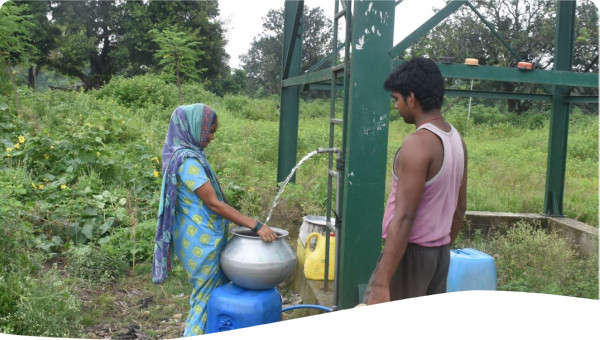A large proportion of Brazil's population is lacking access to water and sanitation, and development is slow, in particular in rural areas due to lack of funds and political will, but also due to inefficiency in resources allocation. Action has been taken by the State of Ceará to implement model called Integrated Rural Water Supply and Sanitation System, illustrating that most important component of attaining sustainable management is user participation.
Approximately 20 million people or 1/3 of the rural population of Brazil have no access to basic services such as safe drinking water and sanitation facilities. The National Health Foundation reported that in 2007 only 28% of the rural population was connected to a drinking water supply and the connection to a sewage system was 22%.
Rural water supply and sanitation made no progress in Brazil in the last 30 years, not only as a result of limited funding and political will, but also due to inefficiency in the resources allocation, and absence of regulations and long term planning. To improve this situation, Infante, a government institution mandated to deal with the issue in 2006 suggested an expanded view of public sanitation beyond a focus on building infrastructure.
This included operation, maintenance, continuing financing and in-home facilities. In general, due to financial costs and operational complexity, Brazilian state water companies offer their services to urban areas and do not include rural and small communities as objects of their business.To accomplish this vision it became necessary to include ongoing environmental education and health education programmes that will increase public consciousness concerning several other management features. The most important of these are: a sustainable use of water resources, adequate use of water supply and sanitation systems and rainwater and solid waste management.
The case describes the ongoing experience of the State of Ceará in implementing a model of participatory management to supply rural communities with drinking water and sanitation facilities. In Brazil, it is a legal responsibility of the municipality to provide the services of potable water supply, sanitation, solid waste management and drainage as well as storm water management. The four components of basic sanitation in urban and rural areas, except in the case of traditional communities (extractive reserves, indigenous areas and slave-descendent communities) are under the legal responsibility of a union. The municipality can delegate the responsibility for these services to a third party through a Contract of Concession.
The model, called Integrated Rural Water Supply and Sanitation System (SISAR), consists of a federation of community associations created specifically with the purpose of self-managing the local systems, with technical support from the State's Water and Sanitation Company (CAGECE).
Each SISAR unit is legally constituted as a non-profit oriented civil association of private rights that manages the rural water supply and sanitation systems operated by the affiliated community associations. It administers its own proprietary goods with is either received from the government or private donors and other revenues include the money collected through the rates charged for its services.
The Ceará experience with the implementation of the SISAR Model is seen as an outstanding one due to its spatial broadness, permanent expansion of the services of water catchment and distribution in rural areas, and prospects for sustainability. There are eight SISAR units in the state of Ceará, one for each river basin. They are located in the cities where CAGECE maintains its business offices. This makes the provision of technical and administrative support and the monitoring of SISAR activities easier to the company. In addition, each SISAR unit is provided by CAGECE with a fully furnished building; payment of some employees and basic needs like energy, water, a vehicle, internet and software until a unit reaches financial autonomy.
User participation is the most important factor of sustainability of rural water supply and sanitation systems. Effective participation is seen as a means of assuring that cultural, environmental and socio-economic characteristics of each community are properly addressed.
It was experienced that this system is difficult to implement with less than fifty families and achieving self-sustainability.
Participatory mechanism leads to more investments in rural water supply and sanitation and commitment of the public sector with the rural systems management.
The partnership between CAGECE and SISAR has led to increased social responsibility there by contributing to environmental preservation.
 Case studies
Case studies
